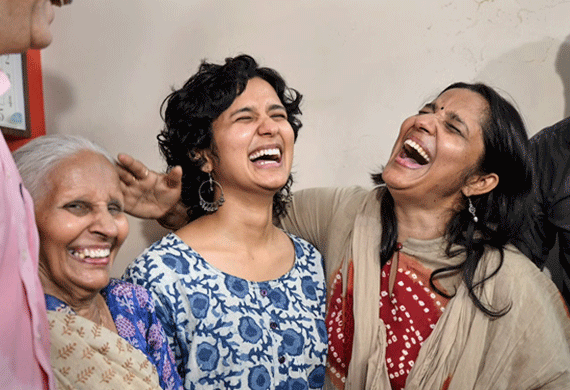
Looking for the Missing Female Bureaucrats of India
By: Rachita Sharma | Tuesday, 5 July 2022
During last month (June), the final results of the Civil Services Examination for 2021 were announced by the Union Public Service Commission (UPSC). In a triple whammy the top three spots were bagged by women. Out of the 685 selected candidates, Shruti Sharma of Utter Pradesh came on top. She followed closely by Kolkata girl Ankita Agarwal and Chandigarh candidate GaminiSinglarespectively.
This was certainly great news for women folk across the country, however it did not come as a surprise. Women have been performing very well in the UPSC examinations.
According to the UPSC Annual Report for 2020-21, women showed a higher success rate in terms of candidates to reach the conclusive interview stage of the Civil Services Examination in 2019. When it came to getting recommended to the civil services by the UPSC, women’s percentage grew from 14.2 in 2018 to 14.6%. However only seven percent of the male candidates who appeared for the interview stage upon clearing the mains were recommended for selection.
Here is some food for thought; while women outdo men in terms of topping the Indian Civil Services exams yet theyfall back drastically when it comes to actually joining the bureaucracy. In reality the number of successful candidates is somewhere between 20-30 percent.
But if we look at the total successful candidates, they still hover around 20-30 percent.
The Gaping Disparity
Women empowerment and growth has been on a gradual upswing over the past several years. More and more women have been proving their mettle across fields & sectors. However, there is still a high prevalence of disparities. Crimes against women are at an all-time high, more women are dropping out of schools and their participation in the country’s workforce remains abysmal.
The same reality in reflected in the gender ratio prevalent in the Indian bureaucracy. Women bureaucrats are way behind their male counterparts.
Let’s take a walk back in time and look at women’s representation through the years. According to data presented by the National Informatics Centre, in 1970 women made up just seven percent of the total IAS officers in the country.
Fifty years have gone by and the number of women entering the IAS has risen to be about 31 percent in 2020. Of the total IAS officers serving currently women make up only 21 percent which is a travesty to say the least.
Why the low number of women IAS officers?
Back in the day when the Anna Rajam George became the very first Indian woman to be successful in passing the IAS exams in 1951, she had to overcome much more than the laborious exam syllabus. She was actively discouraged to join the IAS by the interviewers during her selection interview. In-fact her selection had a caveat; her services were to be terminated in the event of her nuptials.
From 1951 to today, women have had to face various systematic biases and social constraints. It is believed that lack of women officers in IAS can be attributed to various factors such as gender stereotypes, social obligations (wedding, family), lack of support, lack of ambitions etc.
Year after year we see lakhs of people appearing for the Indian civil services examination, the pathway to becoming an IAS. A majority of these applicants are male. The highest that women candidates ever went up to was 30 percent in 2017.
Women also have a shorter time frame when it comes to pursuing career ambitions. Reports suggest that over half of women candidates who successfully became IAS officers were under the age of 26. On the contrary the average age of men succeeding in UPSC is 33 years. Data also suggests that women candidates take way fewer exam attempts than men.
Women an urgent need in the bureaucracy
According to the United Nations Development Program, 'Gender Equality In Public Administration', gender equality is the primary requisite to create an equitable and inclusive public administration system. Women make up nearly half of the world’s population and they require representation in public administration in order to tackle issues that impact them the most.
However the skill and perspective that women bring to the table as public administrators cannot be discounted. Reports suggest that an equitable representation of women in bureaucracy and public administration can help in improving the efficiency of the government. Their participation also helps make governance more responsive and accountable. Not only does it positively impact social issue but also improves the quality of services delivered.
So it is in the interest of the nation that we encourage more women to join the Indian bureaucracy. Their capabilities are certainly not lacking, what they need is encouragement & systematic support.






